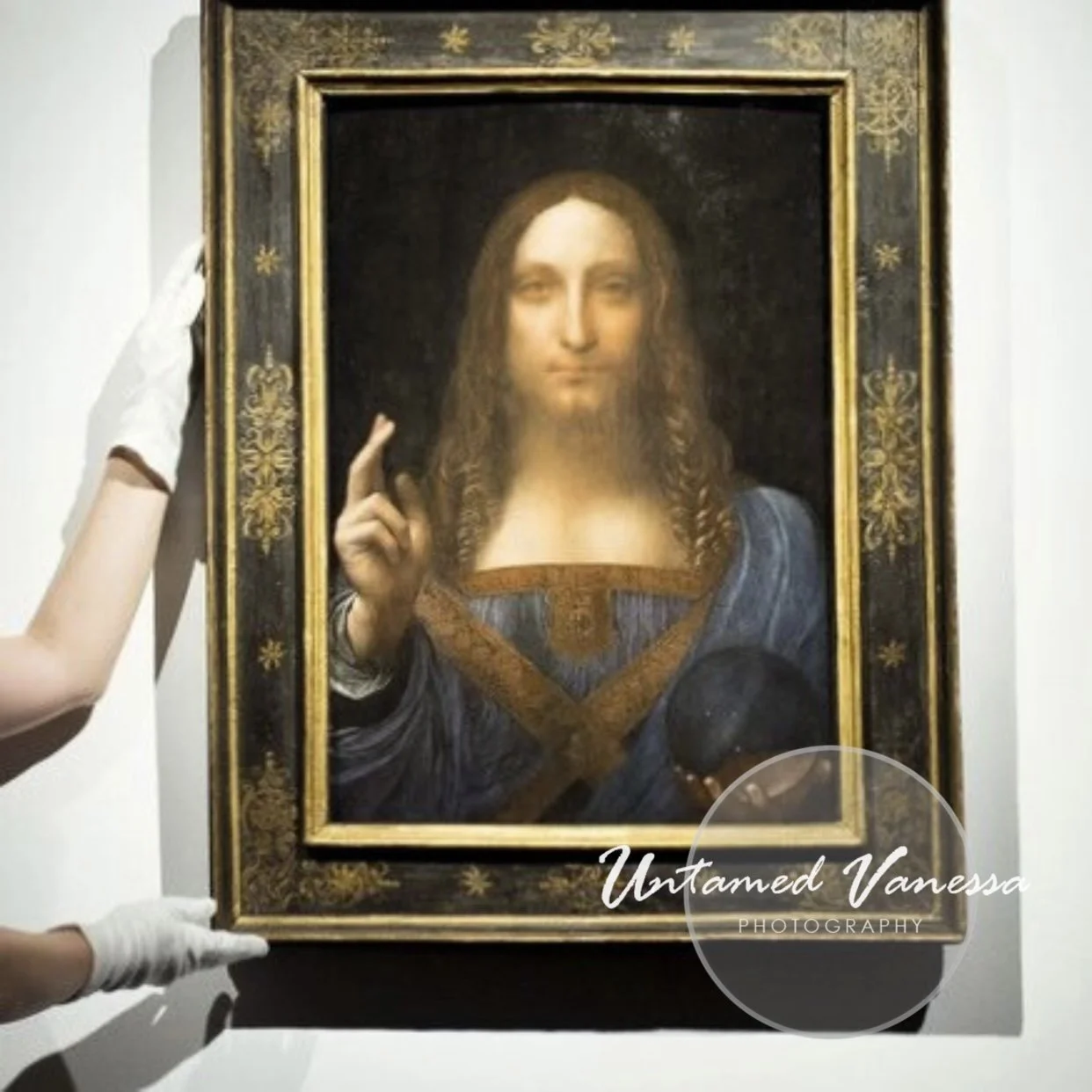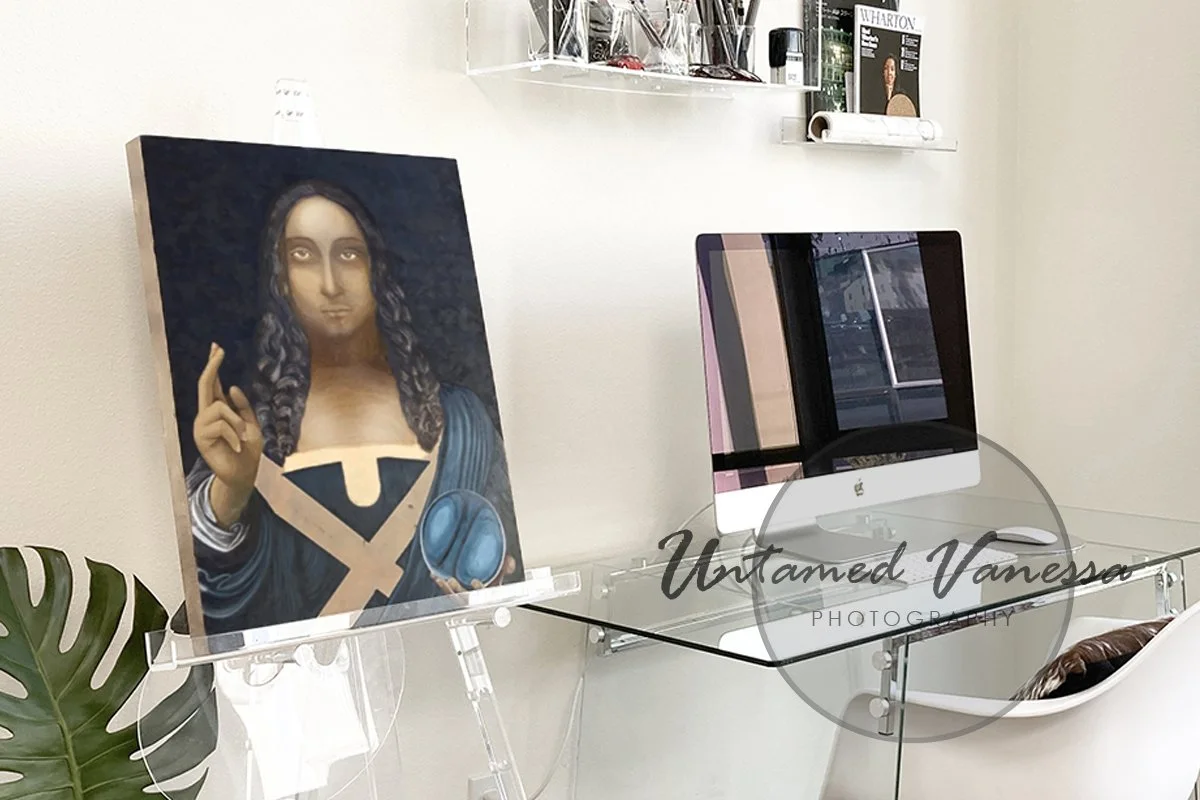$450M in a Dumpster
How I Painted a Masterpiece, Faced My Limits, and Threw It All Away
Leonardo da Vinci’s Salvator Mundi (c. 1500) — a haunting portrayal of Christ as the ‘Savior of the World,’ blending divine serenity with Renaissance mastery. Sold for $450M.
Echoes of da Vinci
My Salvator Mundi (2021) stood on a transparent canvas stand in my office.
I spent relentless chasing Leonardo’s light. Solved the globe, mirrored the divine—but I couldn’t paint the lining of the robe. That one failure broke me. And when morning came, I did the unthinkable. I threw it away.
It was one hell of a morning.
The kind that starts with silence so loud it presses into your skull. My rage didn’t scream—it seethed. A quiet boil inside my chest, shaking only my hands. In that moment, I knew I was going to destroy something I truly loved.
I had painted Salvator Mundi. Not a replica. Not a study. I painted it.
This isn’t a metaphor. I physically painted the piece—oil on panel, with my own hands. The story is real.
What I Couldn’t Paint
In my skylit office on Harrison Street in San Francisco, flooded with white light, I chased the ghost of Leonardo da Vinci in 1500 AD. The Son of Man, holding a crystal orb in one hand and raising the other in blessing, stared back at me every day. I had chosen a wooden panel, just as the original was painted on walnut, and I studied the physics of clear acrylic and light. My palette was as bare and exacting as the night sky. And I worked—relentlessly, mercilessly—through the dark.
Leonardo had left something undone. Historians still debate it. That orb—the sphere of heavenly knowledge, of otherworldly power—was painted without distortion, as though light passed through it unbent. Some said it was an oversight. Others called it a deliberate miracle. But I couldn’t leave it like that.
So I solved it.
I painted the globe the way the laws of optics demand: transparent, reflective, warping the robe behind it. I studied light until my vision blurred. Until my dreams were just folds of drapery and shadows on skin. Until the lines between prayer and madness blurred.
And I got it right. Every glimmer, every whisper of reflection. More correct, perhaps, than Leonardo himself dared.
But I could not paint the lining of the robe.
Not truly.
Not because I didn’t have the skill. No—worse. Because my core collapsed under the weight of it. The lining wasn’t just fabric. It was hope. And I was not worthy to finish it.
Every brushstroke mocked me. Day after day, night after night, the painting sat untouched, radiating both divinity and failure. In my heart, it was already lost.
And so, one morning, I picked it up, took it downstairs, and threw it into the dumpster like trash.
$450 million—gone.
Not the money. Not the auction record set at Christie’s in 2017 when Saudi Crown Prince Mohammed bin Salman acquired the original for a sum no hand should hold. No, mine was not a painting of market value. Mine was a part of my soul I had to burn.
And yet I wonder: Will someone find it in 500 years, the way Salvator Mundi was found after centuries of being lost? Will they see what I tried to do? Will they understand the way I loved this art so deeply it broke me?
Vincent van Gogh died penniless. In his lifetime, no one cared. He painted Starry Night in the throes of anguish. His brilliance lived in brushstrokes, not bank accounts.
Am I like that?
No fame waits for me. I don’t call myself an artist. But I have mastered the craft. And I carry a fire in my chest to make it right. Even if no one sees it. Even if it ends in the trash.
This isn't about art. It's about all of us.
The days when you gave it everything and still failed. When your hope was divine and your despair was unbearable. When you threw away what you once believed would change your life—because keeping it hurt too much.
We’ve all stood at that dumpster.
And maybe, just maybe, we rise again.
Because even in despair, there’s still something holy in the trying.

